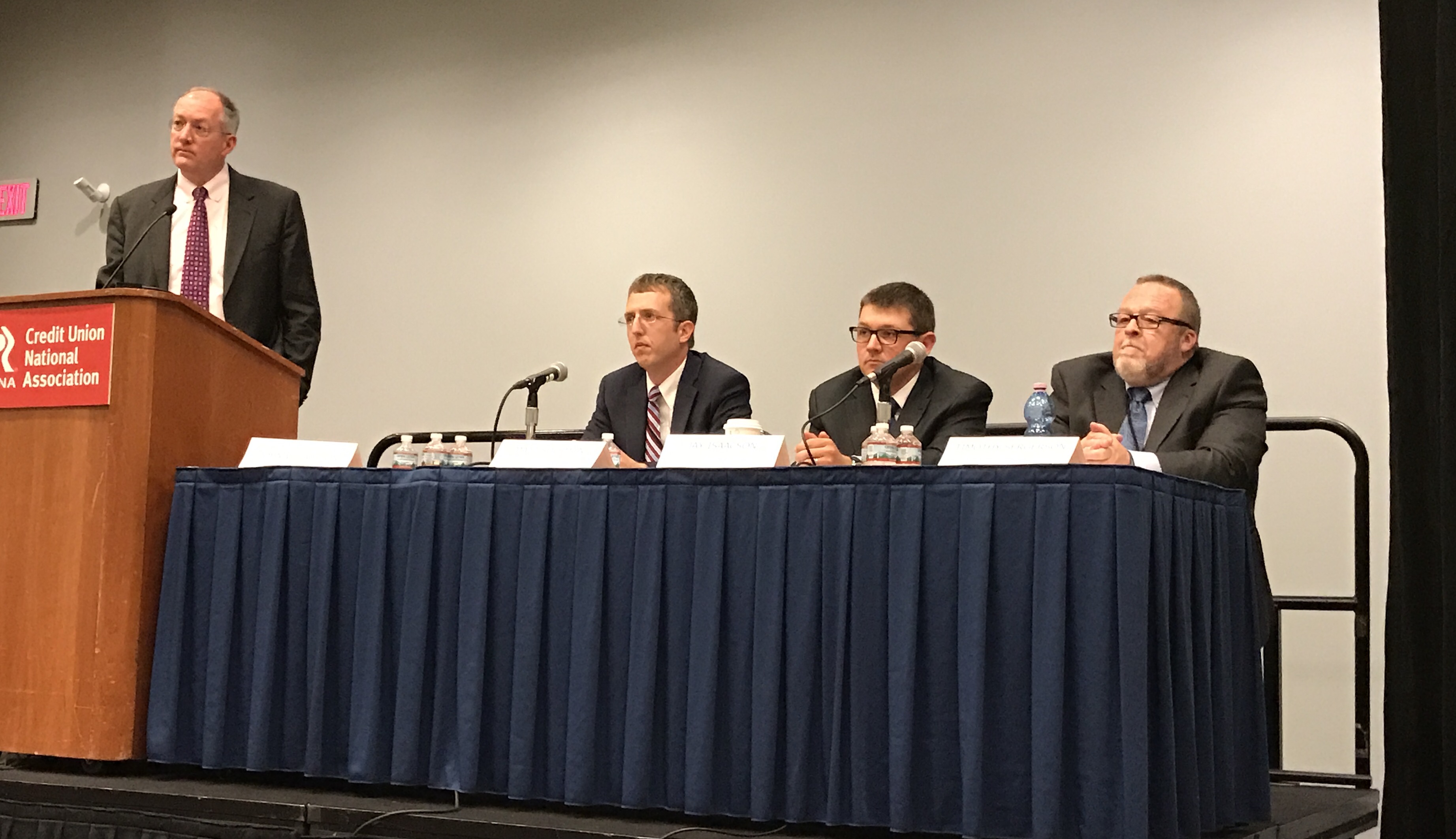 WASHINGTON — While politics and political issues tend to take center stage at CUNA’s Governmental Affairs Conference, there’s another issue that causes credit union leaders to feel almost even more heartburn on a day-to-day basis – cybersecurity.
WASHINGTON — While politics and political issues tend to take center stage at CUNA’s Governmental Affairs Conference, there’s another issue that causes credit union leaders to feel almost even more heartburn on a day-to-day basis – cybersecurity.
Social media, DDoS attacks and ransomware were a focus of concern from the audience at a packed GAC session, “Cybersecurity in 2017 and Beyond.”
One of the panelists, Timothy Sergerson, deputy director of the Office of Examination and Insurance for NCUA, made a strong suggestion to the audience when it comes to having proper cybersecurity measures set up at their credit union. “You have to have good back-up protocols and you must test those protocols regularly.”
Sergerson noted examples of medium- to large-sized credit unions where officials claimed to have proper protocols in place, but never tested them. “Some of them found out 15 months later that the protocols weren’t even working and that set themselves up to face a lot of unnecessary risk,” Sergerson said.
And the cost of defending against cybersecurity is going up, especially with the number of DDoS attacks on the rise. One credit union CEO at the session mentioned that his credit union once was paying $85,000 each year on security measures. Now, he claims the credit union is forking over more than $250,000 each year.
“I think we are only at the beginning of this,” said Sergerson of the steady climb of cyber attacks in the financial sector. But, he said, there’s some good news. “Small and medium credit unions have an advantage since they have a smaller technology footprint, it doesn’t cost as much to defend.” He continued, “Whatever you do, when it comes to cybersecurity, you have to set the gold standard for credit unions of your size.”
Jay Isaacson, vice president of the commercial unit of CUNA Mutual Group said Cyber Insurance is a growing market for his organization precisely because of the growing and real risks involved with cybersecurity.
The Cyber Insurance product offered covers first-party response, which means it covers forensic work on the data breach and breach coaching. The other coverage area is on the liability side of the data breach. “Cyber insurance is evolving with the needs of credit unions,” said Isaacson.
Sergerson suggested that all credit union leaders take a look at the Cybersecurity Assessment Tool on NCUA’s website to give an indication of how to make a cybersecurity plan, understand the regulation requirements as well as updates from the federal government on new security and social media guidelines.


